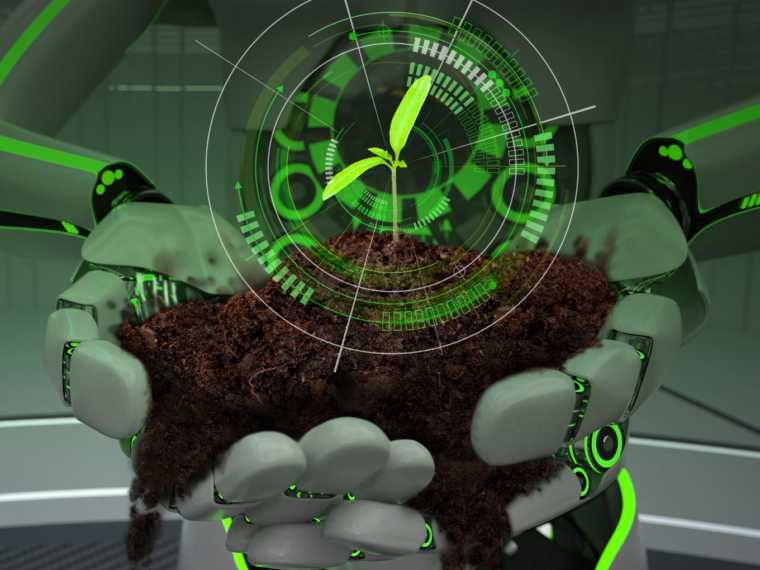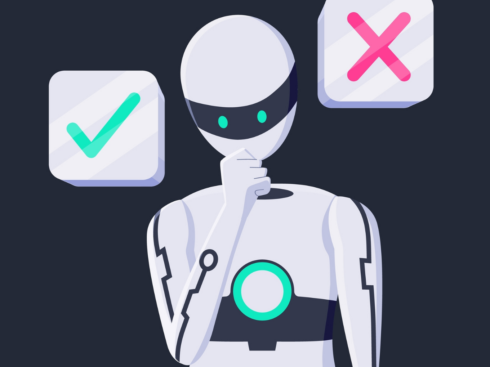
SUMMARY
From predicting demand to optimising farming practices, AI and ML have the potential to increase productivity, lower costs, and deliver better results for farmers and consumers
AI and ML models enable more precise and sustainable farming methods by providing data-driven insights into soil health, crop yields, weather patterns, and pest management
Data-rich AI and ML models can help bridge the gap between consumer demand and supply, reducing food waste and enhancing supply chain management
It has been a few years since those of us in the industry realised that AI and machine learning (ML) have transformed agriculture and the way we think about farming. In India, we are seeing the use of ML models in everything from grocery delivery to banking. And we are on track to see the potential of AI and ML in farming explode, revolutionising the sector, particularly in a largely agrarian economy like India.
The adoption of AI and ML in Indian agriculture will have far-reaching consequences, ranging from increased productivity, lower costs, and better decision-making to businesses being able to deliver fresh produce that meets their customers’ needs and specifications.
To illustrate, consider the recent trend of consumers ordering fruits and vegetables online. It is unlikely that fresh produce, 12-15 hours post-harvest, will be delivered to you when you order something that is not native to a place or is from afar. The produce you receive is most likely from stored stock.
One solution is to harvest and take customer orders almost simultaneously, allowing only the freshest produce to arrive at your door. A powerful AI-powered prediction engine forecasts the demand for each type of produce for the following day, regulating harvesting, wastage (which is about 30-40% in traditional methods, about 3% with precision-modelled prediction engines), and eventually production.
These ML models allow for a super-efficient way of working that puts the producer, the farmer in this case, as well as the customer at the centre of this experience.
Precise Farming With AI & ML
A plethora of opportunities await Indian farmers as the use of AI and ML models becomes more widespread. One of the primary benefits of using these models in agriculture is that they allow for more sustainable and precise farming methods. From soil health, crop yields, and weather patterns to pest and disease management, this is the direction to take when considering not only ML models but also AI-powered tools.
Farmers’ traditional wisdom occasionally fails them in a world of rapid climate change and disrupted rain patterns. In this case, AI and ML models can assist farmers in optimising planting patterns, determining the appropriate amount of fertiliser and irrigation, and detecting issues before they become major issues. AI and ML models can be used to empower farmers, allowing them to make more informed decisions that will lead to healthier ways of increasing productivity and profitability.
Building Healthier And More Profitable Crops With Precision Data
Today, AI and ML models are most useful to farmers in the pre-harvest stages. Agriculture, as an activity and an industry, is dependent on a variety of factors in order to be successful. On the farming side, obvious factors such as irrigation, soil type, fertiliser requirements, seed quality, sowing time, disease manifestation, nutrient deficiency, and so on are critical for crop production. Farmers judge and decide on all of these factors based on wisdom and skills passed down to them or their own experience.
According to research, many of these methods and conclusions are incorrect, and there are large gaps between this traditional knowledge and what is actually happening on the ground. So, if this data is collected and analysed and cause and effect are established, it will improve crop productivity and production in the country.
In fact, you may already be seeing fresh produce that has been grown using data-driven methods such as hydroponics and aeroponics. The data in these methods tell you when to increase moisture and when to boost with nutrients. The precision with which AI and ML can lay out this data helps build a healthy product as well as an efficient, economical, and profitable crop.
Another aspect is fertilisers. Today, the push to use fertiliser is so strong that farmers do not even consider whether the crop requires it, how much is required, and so on. It is de rigueur to dump fertiliser on a plant for a better yield. This practise has several negative consequences, including unsustainable crop production and soil degradation.
Bridging The Gap In Consumer Demand & Supply
Furthermore, having measures on the supply side is insufficient. On the demand side of the equation, there are consumers who want one thing and growers who produce something else. Today’s consumer buys what is available rather than what they actively want, and this information or data is rarely passed down to producers. A massive chasm that harms both consumers and producers!
Closing this gap would entail learning about consumer behaviour — when they prefer to buy, what price point works best for them, in-season and off-season demand, and so on. The granularity of this data, when built into an AI model, aids in determining demand and making a full crop projection, which, when shared with farmers, assists them in growing new varieties of plants with minimal water waste.
According to experts, the next major global crisis will be water scarcity. Agriculture, as we all know, is water-intensive, with hundreds of litres often going to waste on each farm every day. If ML models could predict how much water would yield the best yield and when we would be looking at not only the judicious use of precious water but also produce that is as it should be.
Predicting Demand & Reducing Waste
The stark contrast between India’s severe hunger issue and its significant problem with wasted fresh produce is one of the country’s biggest puzzles. India is one of the world’s top fruit and vegetable producers, but due to inadequate storage and transportation systems, a sizable portion of the produce is wasted.
In order to predict demand, optimise logistics, enhance supply chain management, reduce food waste, and ensure that fresh produce reaches the market, data-rich AI and ML models should be thoroughly tested.
Overcoming Challenges: Fragmentation Of Landholdings
But like all technological progress, this too has challenges. A significant challenge facing Indian agriculture is the fragmentation of landholdings. Most farmers in India own small plots of land, making it difficult to adopt modern agricultural practices.
AI and ML can help farmers make more informed decisions by providing them with data on weather patterns, soil conditions, and crop yields. This information can be used to optimise planting patterns, select the right seeds, and determine the appropriate amount of fertiliser and irrigation required. By leveraging this technology, small farmers can improve their productivity and profitability.
What About The Farmers?
However, the use of AI and ML in agriculture in India also raises concerns about the impact on employment. Agriculture is a labour-intensive industry, and the adoption of AI and ML could result in job losses for farmers and farm workers.
This can have a significant impact on rural communities, where agriculture is the primary source of employment. It is crucial to ensure that the benefits of AI and ML are shared equitably and that measures are taken to mitigate the impact on employment.
Another concern is the cost of adopting AI and ML in agriculture. The high cost of technology and the lack of access to financing can be significant barriers for small farmers. It is essential to develop affordable and accessible solutions that can be easily adopted by small farmers. Government subsidies and support will play a crucial role in facilitating the adoption of AI and ML-driven tech in agriculture.

























